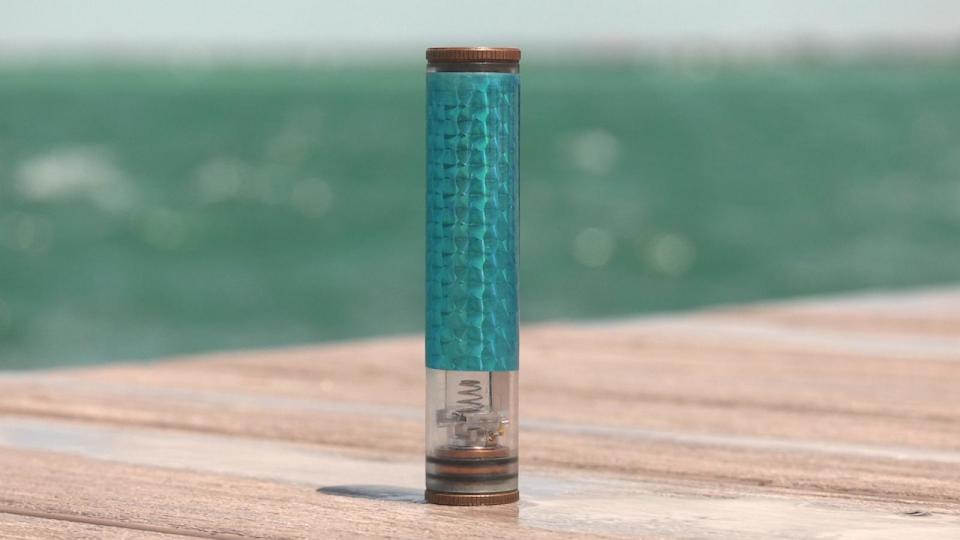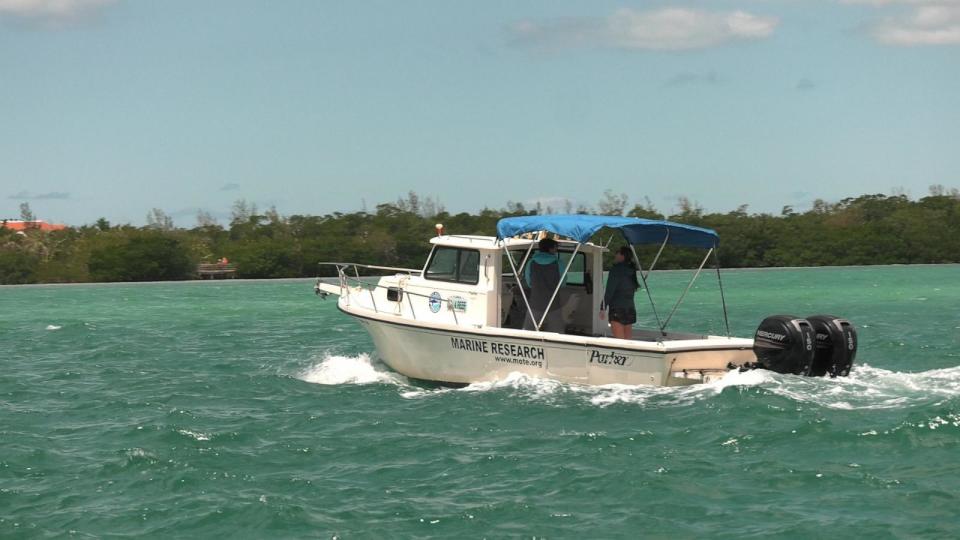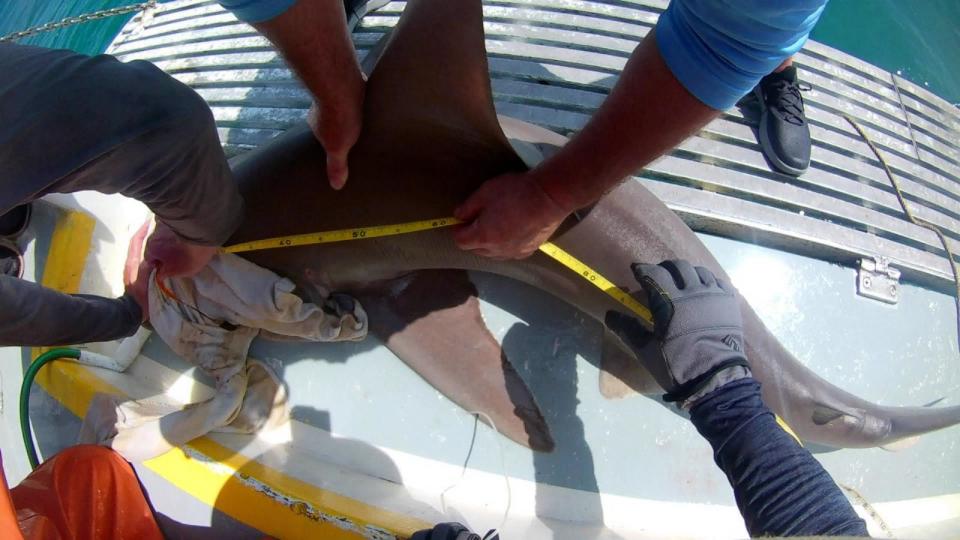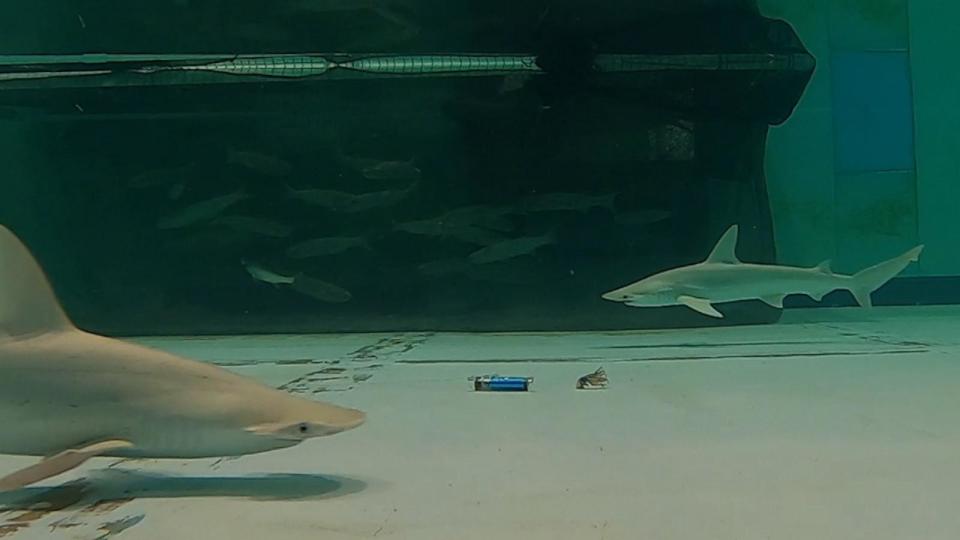Shark conservation has been so successful that researchers are finding ways to curb human-shark interaction
Shark conservation efforts in the last two decades have been so successful that researchers are testing ways to mitigate human-shark conflict as populations continue to rise.
Sharks are increasingly becoming a nuisance to fishers as they engage in depredation -- or the act of attacking or plundering -- of catch, said Demian Chapman, senior scientist and director for the Center for Shark Research at the Mote Marine Laboratory & Aquarium in Sarasota.
MORE: Warmer sea surface temperatures have led to a bull shark population increase, scientists say
A device about the size of a roll of quarters that shocks sharks that attempt to bite on fishing lines may be the answer to reducing shark depredation as well as sharks ending up as bycatch, Chapman told ABC News.

The SharkGuard electrical pulse deterrent attaches to the fishing line in place of the sinker, about 10 inches away from the bait. The device sends out shock waves with about the strength of a prank pen, which aggravate the sensitive pores sharks have to detect prey.
"It's a sense we don't have," Chapman said. "It doesn't seem to hurt them, but they don't enjoy the sensation."
MORE: 10 people killed in unprovoked shark attacks last year, report finds
The device is manufactured by a U.K.-based company called Fishtek Marine, which published a paper in 2022 that showed promising results in bycatch mitigation in tuna longline fishery.
Now, researchers at the Mote Marine Laboratory & Aquarium in Sarasota, Florida, are conducting their own tests in its research laboratory equipped with tanks that can hold 60,000 gallons of water -- a much less expensive process than running tests in the field, Chapman said.

When the device is placed in the tank, it both delays and deters the sharks from attempting to get the bait, Chapman said. After the initial shock, the sharks sometimes won't take the bait at all and will "sulk" at the end of the tank, Chapman said.
For the sharks that try again, it takes them more than double the amount of time to get to the bait, the tests show.
MORE: Global warming could increase risk of human-elephant conflict, researchers say
The delay could prove to be helpful to the fishers, who then have more time to retrieve the fish before the shark makes another attempt of depredation, Chapman said.
So far, the researchers have tested small hammerhead and bonnet head sharks. But they are aiming to test a wider variety of species, including sandbar sharks, which are known to steal fish, Chapman said.

An estimated 100 million sharks are killed per year by humans, a study published in Science in 2019 found. Much of those deaths are as a result of fishing bycatch.
Management practices put in place in the last two decades have allowed shark populations to bounce back, Chapman said.
MORE: As tiger populations increase, so do conflicts with humans
Mote has been conducting shark surveys off the coast of Sarasota since 2003. Every quarter, researchers venture into the Gulf of Mexico to tag sharks in an effort to understand better the rate of population rise.
In 2021, researchers caught a record of 104 sharks -- eight different species -- in four days, the most ever caught in a summer quarter.

The number of sharks tagged per hour has been increasing over the past 20 years, but Chapman wouldn't character the rise in numbers as an overpopulation or infestation.
"We don't know if they're at the level where they need to be to be important for the ecosystem, " he said. "But we do know there's more of them, and so we have to learn how to live with them again."
MORE: Scientists have an explanation why there is an increase of shark attacks off East Coast
Shark conservation has been so successful that researchers are finding ways to curb human-shark interaction originally appeared on abcnews.go.com

